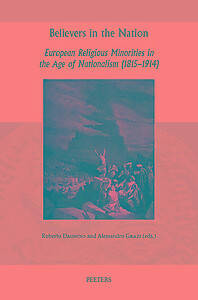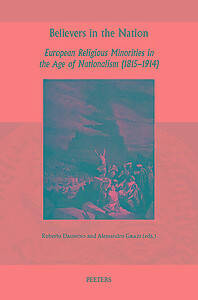
- Afhalen na 1 uur in een winkel met voorraad
- Gratis thuislevering in België vanaf € 30
- Ruim aanbod met 7 miljoen producten
- Afhalen na 1 uur in een winkel met voorraad
- Gratis thuislevering in België vanaf € 30
- Ruim aanbod met 7 miljoen producten
Zoeken
Believers in the Nation
European Religious Minorities in the Age of Nationalism (1815-1914)
Dagnino Roberto
€ 68,00
+ 136 punten
Omschrijving
Existing literature on the subject has pointed out that the sense of belonging generated by nineteenth-century nationalism often replaced religions in their public role of shaping common identity. In fact, religions did not get secluded into the private sphere but kept playing a role in the national discourse. A difference need nevertheless be detected between majority and minority religion. If the former could present itself as a societal cohesive factor, the latter has a more complicated task. The contributions in this volume reconstruct the adaptation strategies of nineteenth-century Catholic, Jewish and Protestant minorities in Europe as determined both by national contexts and internal dynamics. The two recurrent strategies of accommodation and confrontation took place in several forms and stages. The volume aims therefore at reconstructing the position of religious minorities in different European contexts (United Kingdom, Germany, the Netherlands and Italy) in the period 1815-1914 but also at reassessing the concept of 'religious minority' as a factor of cultural change.
Specificaties
Betrokkenen
- Auteur(s):
- Uitgeverij:
Inhoud
- Aantal bladzijden:
- 205
- Taal:
- Engels
- Reeks:
- Reeksnummer:
- nr. 52
Eigenschappen
- Productcode (EAN):
- 9789042933606
- Verschijningsdatum:
- 28/03/2017
- Uitvoering:
- Hardcover
- Formaat:
- Genaaid
- Afmetingen:
- 160 mm x 240 mm
- Gewicht:
- 553 g

Alleen bij Standaard Boekhandel
+ 136 punten op je klantenkaart van Standaard Boekhandel
Beoordelingen
We publiceren alleen reviews die voldoen aan de voorwaarden voor reviews. Bekijk onze voorwaarden voor reviews.











